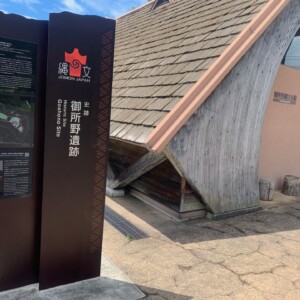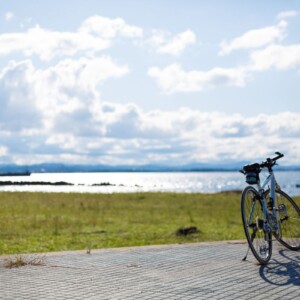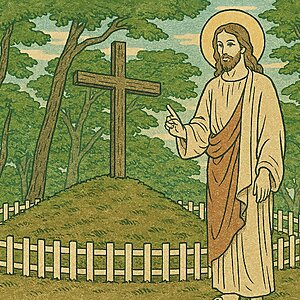
[Minamisoma City, Fukushima Prefecture] Follow in the footsteps of the Oshu Soma clan, who fostered a unique culture for 800 years
table of contents
- 1 The Soma clan, a Bando warrior who received the land of Oshu from Minamoto no Yoritomo.
- 2 The Oshu Soma clan's first residence was Besshokan.
- 3 Odaka Castle was the residence of the Oshu Soma clan for about 280 years.
- 4 The northernmost region captured in the battle against Date Masamune
- 5 The Date clan saves us from the danger of confiscation of our territory.
- 6 “Nakamura Castle” was the headquarters of the Soma Nakamura domain.
- 7 The ruins of Nakamura Castle have been maintained and turned into a recreational park for citizens as ``Umaryo Park.''
More than 800 years have passed since the Sengoku feudal lord Soma clan was given the namekata district of Mutsu Province (Minamisoma City, Iitate Village) in the northern part of Fukushima Prefecture by Minamoto no Yoritomo. Even in the Reiwa era, the Soma region of Fukushima Prefecture still retains a strong influence on the culture created by the Soma clan.
The Soma clan era lasted for about 680 years until the Meiji period, when the domains and prefectures were abolished, and it created folk cultures such as Soma Nomaoi, Soma Bon Uta, and Soma Nagareyama.

The Soma clan, a Bando warrior who received the land of Oshu from Minamoto no Yoritomo.
The Soma clan is said to have been born in the Chiba clan, a Bandomusha clan, whose territory was in Shimosanokuni, which spans the current state of Chiba and Ibaraki prefectures at the end of the Eiyasu period.
It all began when Morotsune, the second son of the lord, Chiba Tsunetane, inherited an area known as Soma Mikuriya in the northern part of Shimousa Province (now Toride City, Ibaraki Prefecture to Kashiwa City, Nagareyama City, and Abiko City, Chiba Prefecture), and took the name of the Soma clan.
Soma Shizuna took part in the battle in which Minamoto no Yoritomo destroyed the Oshu Fujiwara clan (1189), and took credit, and received commended by Ikugata County as a reward. For a while, the Soma clan had territory in Shimosa Province (Shimosa Soma clan) and Oshu (Oshu Soma clan), and for about 130 years he left a castle in Oshu territory and managed it from Shimosa Province.
In 1323, the sixth head of the Oshu Soma clan, Shigetane, brought 83 retainers (there is a theory that there were over 30) into Ikigata County, Mutsu Province, and began directly governing the land of Oshu.
The Oshu Soma clan's first residence was Besshokan.

Namegata District, Mutsu Province, where the Soma clan first received the Holy Communion, is present-day Minamisoma City and Iitate Village. )” was made into a castle.
Besshokan was the residence of the Miura family, who held an important position in the Kamakura shogunate, and it is said that Shigetane vacated it when he entered the castle. Currently, there are no buildings left, but the remains can be found within the grounds of Soma Ota Shrine.
"Soma Ota Shrine" is one of the three shrines that enshrines Myoken Bosatsu, the guardian deity of the Oshu Soma clan, and is currently the departure shrine for the heroic festival "Soma Nomaoi", which is designated as an important intangible folk cultural property of the country. It is known as.
Soma Ota Shrine <Information>
- Name: Soma Ota Shrine
- Address: 143 Nakaota Tatekoshi, Haramachi-ku, Minamisoma-shi, Fukushima Prefecture 975-0052
- Phone number: 0244-23-2058
- Official URL: Minamisoma Tourism Association
Google Map
Odaka Castle was the residence of the Oshu Soma clan for about 280 years.

Shigetane stayed at Besshokan for about three years, and in 1326 he moved to a mansion in Odaka (present-day Odaka Ward, Minamisoma City), about 5km away, and in 1336, he renovated it to make it look like a castle. . This ``Odaka Castle'' was the residence of the Oshu Soma clan until 1611, when they moved their headquarters to ``Nakamura Castle''.
There are no buildings left from Odaka Castle, and the only remains are on a small hill within the grounds of Soma Odaka Shrine. ``Soma Odaka Shrine'' is also one of the three Soma Myoken shrines, and is the shrine where ``Soma Nomaoi'' takes place.
Kotaka Castle Ruins <Information>
- Name: Kotaka Castle Ruins
- Address: Odakajoshita, Odaka-ku, Minamisoma City, Fukushima Prefecture 979-2102
- Phone number: 0244-44-6014 (Odaka Tourism Association)
- Official URL: Kodaka Tourism Association
Google Map
The northernmost region captured in the battle against Date Masamune
The Oshu Soma clan greatly expanded its power from the Kamakura period to the Sengoku period. In addition to Namegata District, the territory includes Shibeha District (currently Okuma Town, Namie Town, Futaba Town, and Katsurao Village) to the south, and Uda District to the north (Soma City and Shinchi Town). Shinchimachi]).
However, the northernmost part of Uta County, the area currently housed in Shinchi Town, was stolen after the battle with the Date clan, which had a large force on the north side of the Soma clan of Oshu.
The Oshu Soma clan resisted the attacks of the Date clan by building fortresses such as Shinchi Castle and Komagamine Castle, but were unable to counter the power of the Date clan led by Date Masamune. From 1589 until the Meiji period, this area was under the control of the Date Sendai Domain.
There are currently 30,000 tulips of 40 different varieties planted at the Shinchi Castle ruins, and the area is crowded with tourists in spring. A stone monument has been erected on the site of Komagamine Castle, which was also known as Gagyu Castle, but there are no remains of the castle.

Shinchi Castle Ruins <Information>
- Name: Shinchi Castle Ruins
- Address: Yachi Koyadate Maeji, Shinchi-cho, Soma-gun, Fukushima Prefecture 979-2702
- Phone number: 0244-26-3720 (Shinchi Town Tourism Association)
- Official URL: Shinchi Castle Ruins of Shinchimachi
Google Map

Komagamine Castle Ruins <Information>
- Name: Komagamine Castle Ruins
- Address: Komagaminekan, Shinchi-cho, Soma-gun, Fukushima Prefecture 979-2611
- Phone number: 0244-62-4477 (Shinchi Town Hall Education and General Affairs Division)
- Official URL: Komagamine Castle Ruins, Shinchicho
Google Map
The Date clan saves us from the danger of confiscation of our territory.
During the period of rapid change from the Sengoku period to the Edo period, the Soma clan of Oshu was on Toyotomi's side, and the territory was protected, but the 16th head of the family, Soma Yoshitane, decides to build a stronger castle than "Odaka Castle."
In 1595, Murakami Castle began building the coastline about 3km east of Kodaka Castle (Odaka Ward, Minamisoma City), but was abandoned due to a fire, and soon renovated the Ushigoe Castle, which was originally the castle of the Ushigoe clan, which was destroyed by the Soma clan of Oshu, and moved from Kodaka Castle in 1597.
The Battle of Sekigahara broke out soon after. The Oshu Soma clan was in a neutral position, and after the war, Tokugawa Ieyasu criticized them for this, and their territory was confiscated for a time.
This situation was the biggest crisis for the Oshu Soma clan, but it is said that for some reason, their old enemy, the Date clan, interceded with Ieyasu, and he succeeded in restoring power. Due to this incident, Yoshitane thought that ``Ushigoe Castle'' was a bad luck, so he moved his residence to the original ``Odaka Castle'' and abandoned ``Ushigoe Castle''.
Murakami Castle Ruins <Information>
- Name: Murakami Castle Ruins
- Address: Murakamidatekoshidate, Odaka-ku, Minamisoma-shi, Fukushima Prefecture 979-2141
- Phone number: 0244-44-6014 (Odaka Tourism Association)
- Official URL:-
Google Map
Ushigoe Castle Ruins <Information>
- Name: Ushigoe Castle Ruins
- Address: Ushigoshi Castle Town, Haramachi Ward, Minamisoma City, Fukushima Prefecture 975-0017 *Entry is prohibited as it is within the water source.
- telephone number:-
- Official URL:-
Google Map
“Nakamura Castle” was the headquarters of the Soma Nakamura domain.

After overcoming the crisis, the Oshu Soma clan was given the territory and 60,000 koku by the shogunate, including the usual territory of Igata District, Shibe District, and Uta District (other than Shinchi), and became a daimyo.
The first lord of the feudal domain was Yoshitane's eldest son, Soma Toshitane. Toshitane built a castle in Nakamura (Nakamura, Soma City) in 1611 and moved from "Odaka Castle," and from then on, the Soma Oshu clan carried out feudal administration at Nakamura Castle for about 260 years until the end of the Edo period.
Nakamura Castle, the residence of the Oshu Soma clan, is also known as Baryojo, and although no actual buildings remain, the remains of the castle indicate that it was quite large and sturdy.

The ruins of Nakamura Castle have been maintained and turned into a recreational park for citizens as ``Umaryo Park.''
``Nakamura Castle'' is currently being maintained as ``Maryo Park'' and is open to the public as a place of relaxation. It is especially famous for its cherry blossoms and autumn leaves. Within the castle ruins is ``Soma Nakamura Shrine'', one of the three major Myoken shrines in Soma, and during ``Soma Nomaoi'', the marching ceremony for Udago (Soma City) is held.

Maryo Park <Information>
- Name: Maryo Park
- Address: 140 Kitamachi, Nakamura, Soma City, Fukushima Prefecture 976-0042
- Phone number: 0244-35-3300 (Soma City Tourism Association)
- Official URL: Soma City Tourism Association Maryo Park



![[Soma City, Fukushima Prefecture] A brave festival where cavalry warriors compete. “Soma Nomaoi” has a history of over 1000 years DSC_49710](https://jp.neft.asia/wp-content/uploads/2022/07/DSC_49710-150x150.jpg)
![[Fukushima Prefecture] 12 recommended beaches in Fukushima Prefecture! You can enjoy the sea beach and lake bathing! Matsukawaura](https://jp.neft.asia/wp-content/uploads/2023/07/27f35ff8ebfeccd922a19407069c7565-150x150.jpg)
![[Fukushima] Let's go to Iitate Village, a beautiful village in Japan! Roadside station “Maidan” is also open! Toikan 2](https://jp.neft.asia/wp-content/uploads/2017/11/02b1cd3c9c14ba9cfea87ec0f92acdcb-150x150.jpg)
![A taste review of "Miso-pickled Cream Cheese," a delicious snack to enjoy with local sake [Minamisoma City, Fukushima Prefecture] Cream cheese pickled in miso](https://jp.neft.asia/wp-content/uploads/2025/10/92937720588608639b30761c2d56c4c3-150x150.jpg)











